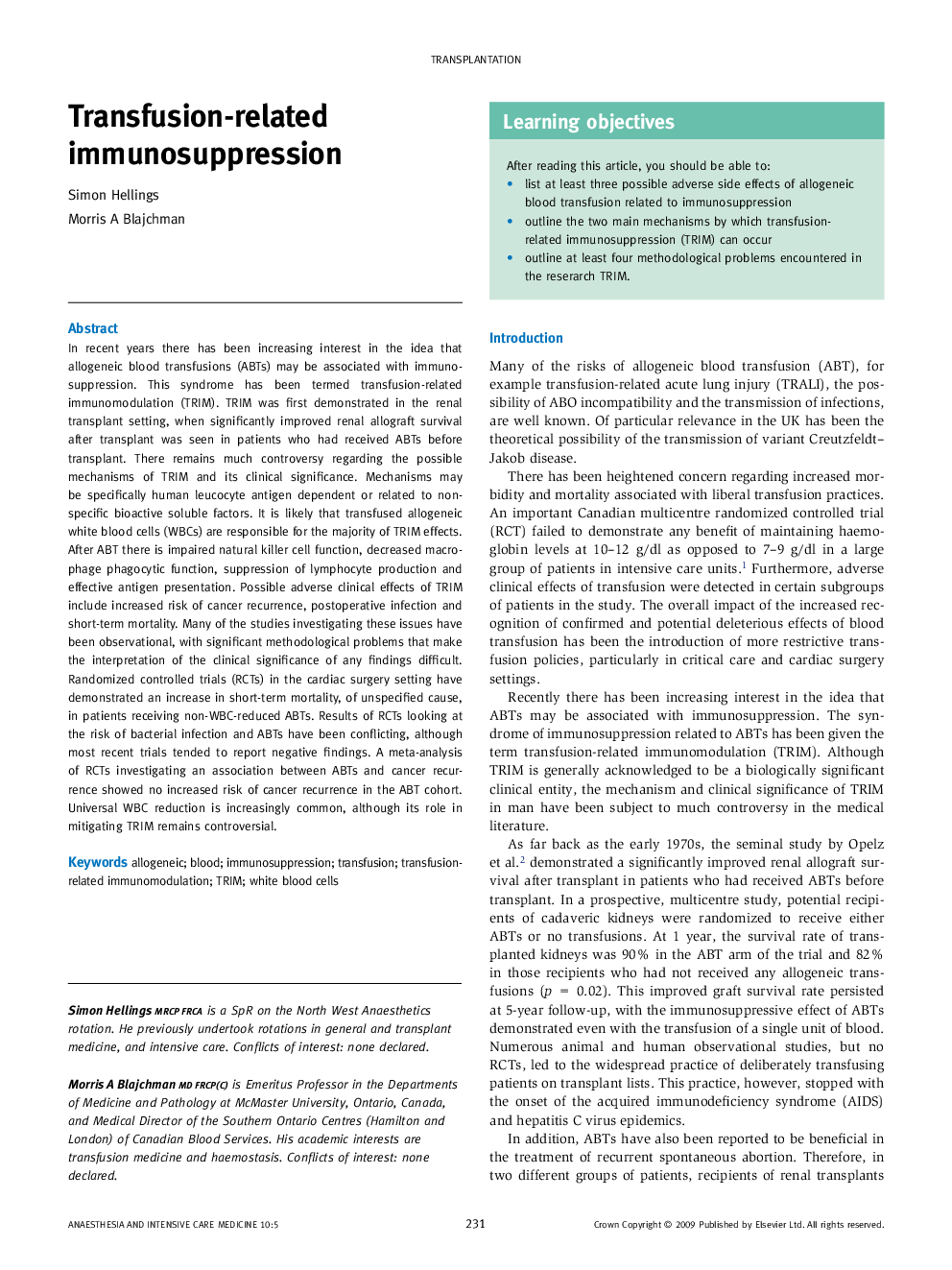| Article ID | Journal | Published Year | Pages | File Type |
|---|---|---|---|---|
| 2743608 | Anaesthesia & Intensive Care Medicine | 2009 | 4 Pages |
In recent years there has been increasing interest in the idea that allogeneic blood transfusions (ABTs) may be associated with immunosuppression. This syndrome has been termed transfusion-related immunomodulation (TRIM). TRIM was first demonstrated in the renal transplant setting, when significantly improved renal allograft survival after transplant was seen in patients who had received ABTs before transplant. There remains much controversy regarding the possible mechanisms of TRIM and its clinical significance. Mechanisms may be specifically human leucocyte antigen dependent or related to non-specific bioactive soluble factors. It is likely that transfused allogeneic white blood cells (WBCs) are responsible for the majority of TRIM effects. After ABT there is impaired natural killer cell function, decreased macrophage phagocytic function, suppression of lymphocyte production and effective antigen presentation. Possible adverse clinical effects of TRIM include increased risk of cancer recurrence, postoperative infection and short-term mortality. Many of the studies investigating these issues have been observational, with significant methodological problems that make the interpretation of the clinical significance of any findings difficult. Randomized controlled trials (RCTs) in the cardiac surgery setting have demonstrated an increase in short-term mortality, of unspecified cause, in patients receiving non-WBC-reduced ABTs. Results of RCTs looking at the risk of bacterial infection and ABTs have been conflicting, although most recent trials tended to report negative findings. A meta-analysis of RCTs investigating an association between ABTs and cancer recurrence showed no increased risk of cancer recurrence in the ABT cohort. Universal WBC reduction is increasingly common, although its role in mitigating TRIM remains controversial.
